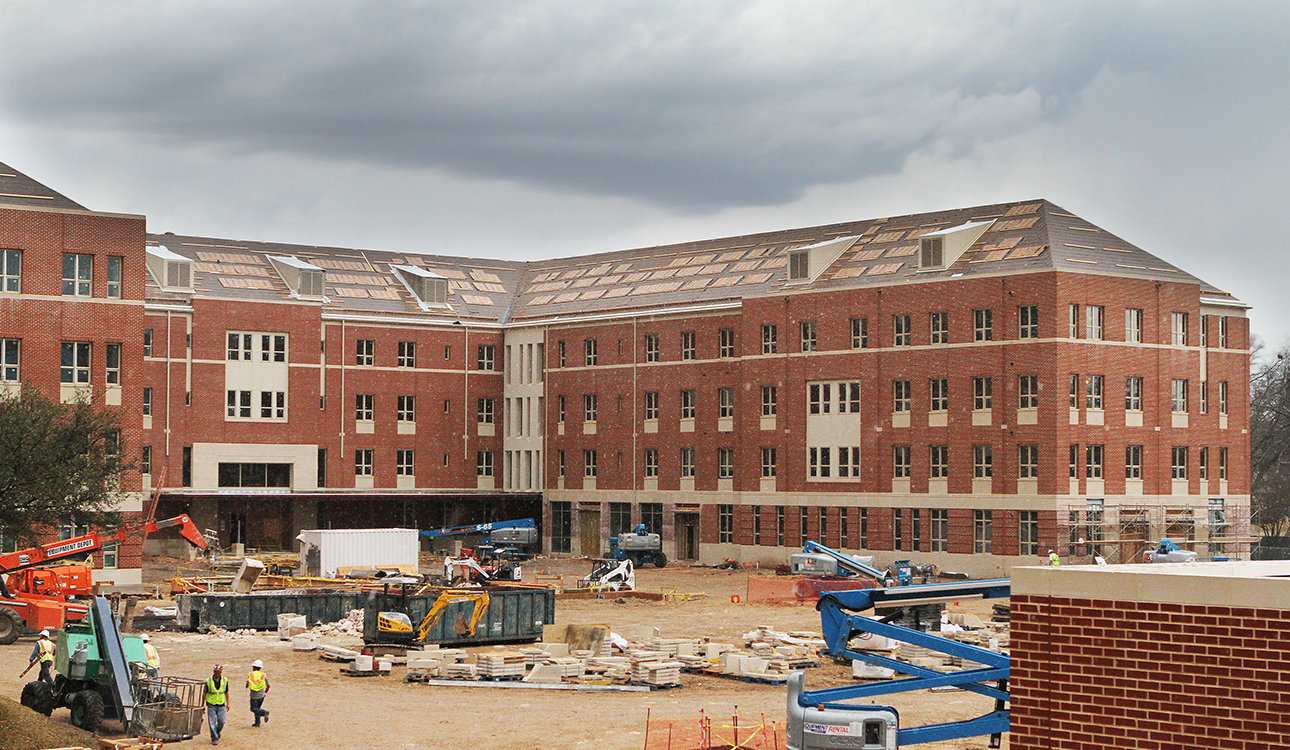

Matt Hellman | Lariat Photo Editor
By Madison Ferril
Reporter
This August, East Village will open to provide 701 beds for students.
Dr. Jeff Doyle, dean for student learning and engagement, said the construction of East Village is on target.
After East Village opens, Baylor will begin refurbishing older residence halls, starting with South Russell Residence Hall.
With the addition of East Village to Baylor’s facilities, Baylor could see an increase in the number of students living on campus.
“The percentage of students living on campus could go from 39 percent to 44 percent,” Doyle said.
The refurbishment of South Russell Hall means the university will not have the 280 beds in South Russell for use next year.
“All of our relatively older residence halls will be refurbished over the next eight to 10 years,” Doyle said.
Doyle said East Village is innovative on a national level because of its different room layouts.
“We’re trying to return to an era where a dorm is more like a home,” Doyle said.
Cove suites, which consist of four rooms that share a bathroom, are primarily for freshmen.
Semi suites, which are two rooms that share a bathroom, are primarily for sophomores, with residential apartments mainly for juniors and seniors.
Doyle said they will give the programs housed there some autonomy with regard to who lives where.
“I think it’s going to change how people feel about the campus,” Doyle said. “The community will feel larger and more connected.”
Doyle said, though Baylor considered closing a dining hall when East Village opened, they decided to keep all five dining halls open and study the effects.
If keeping five dining halls open proves too expensive or if students stop frequenting a certain dining hall, then they will consider closing one down.
Dr. Ian Gravagne, who will serve as faculty-in-residence for East Village, said he understands the role a residential college can play for students because he personally benefited from living in a residential college as an undergraduate at Rice.
“Our most important goal is to provide an environment as conducive as possible to the academic success of every student living there,” Gravagne said.
Gravange said that the Engineering and Computer Science Residential College in East Village will contain similarities to other residential colleges such as Brooks, but that there will be differences as well.
“One of the important things is working with community leaders,” Gravange said. “We want to give them the language to say what they want their community to be.”
Student Body President Kelly Rapp said Baylor is trying to get more students to live on campus.
“I think it’s great that we can create a community where students with the same major can live,” Rapp said.
Gravange said studies have shown that Living and Learning programs help students succeed in their field, though further study will show exactly why this occurs.
“Maybe the community helps students succeed, or maybe the community attracts high capacity students,” Gravange said. “I’m inclined to believe it’s a little bit of both.”
Doyle said that he believes that Living and Learning programs have a positive impact on the students who choose to participate in them.
“Seeing a university like Baylor realizing the importance of residential communities of students is great,” Doyle said.





